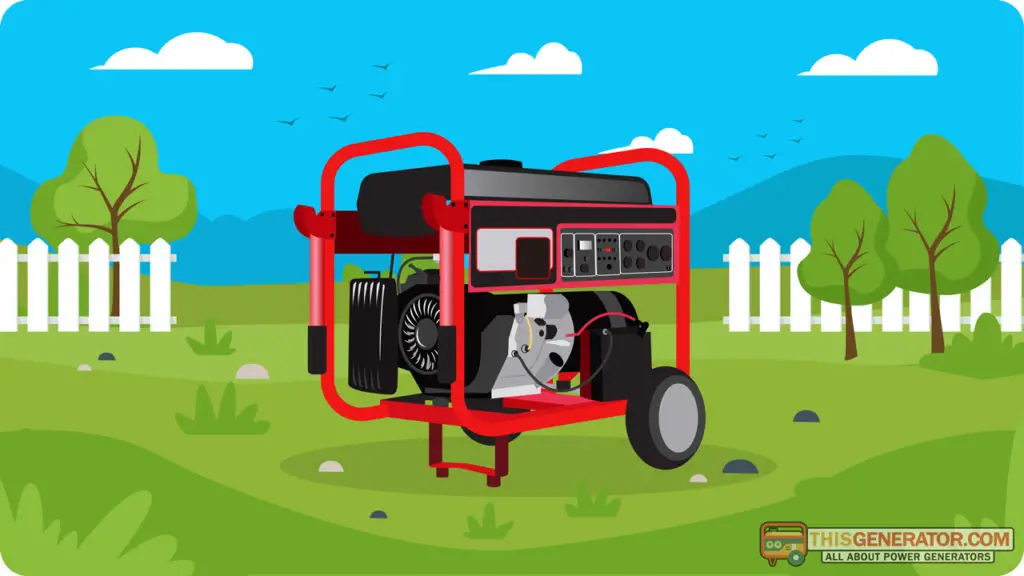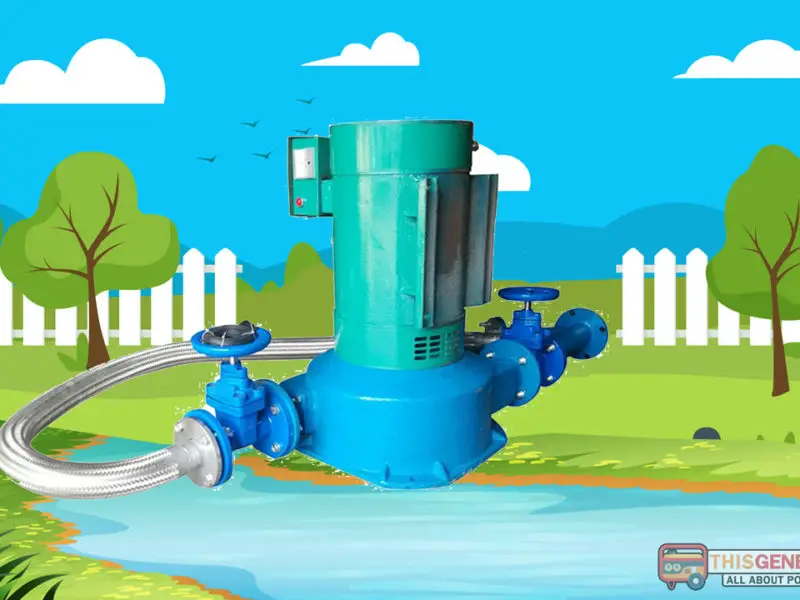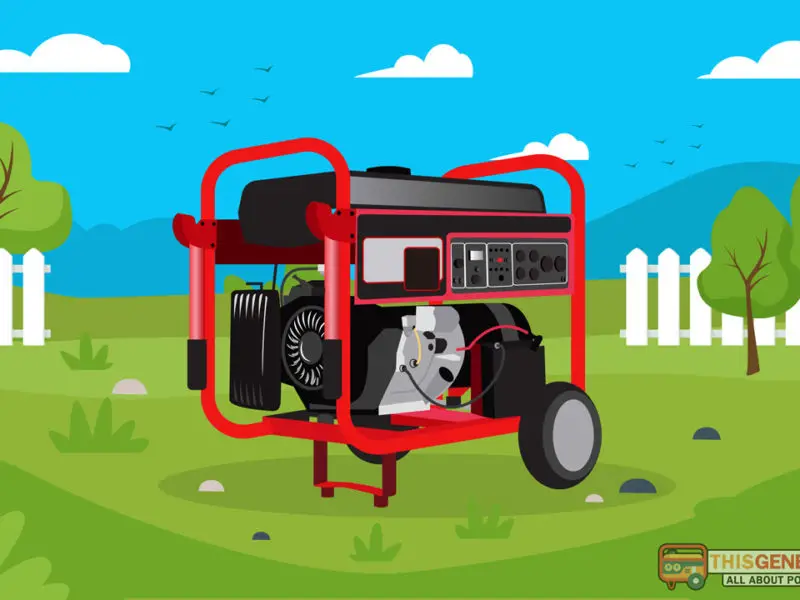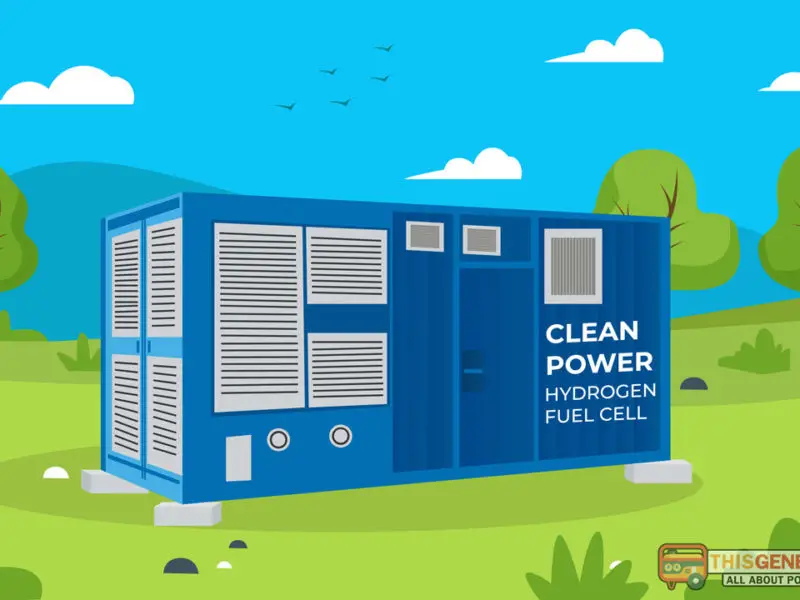You’re probably wondering whether tri-fuel generators even exist in the first place. Well, they do. Though not as common as dual-fuel models and even scarcer than traditional single-fuel units, tri-fuel generators have become relatively more available for domestic applications in the recent past.

These generators can use up to three different types of fuel. For instance, a typical fuel generator can run on natural gas, propane, or gasoline. This way, if you run out of propane but have some gas around from your car, you can refill the tank with gasoline (albeit with some modification) and continue running the generator.
It’s precisely the kind of versatility you want, especially when using the generator far from your regular fuel provider.
But the question begs – should you get one? More specifically, is a portable tri-fuel generator worth it?
What’s a Tri-Fuel Portable Generator
Tri-fuel generators, also known as triple fuel generators, are power generators that can run on three different fuel sources, typically gasoline, propane, and natural gas. This way, you can switch sources if you run out of your primary fuel.
The generators use carburetors that don’t become clogged, making fuel switching easy and uncomplicated. To switch from one fuel to another, you just turn the lever on the selector valve, typically located above the low-pressure regulator.
Nearly all tri-fuel generators are portable units that you can move from one location to another with ease.
How Tri-Fuel Generators Work
Tri-fuel generators work almost the same way as bi-fuel models, except they can handle three rather than two different fuel types.
As in bi-fuel and dual-fuel generators, tri-fuel systems incorporate a fuel conversion kit. The fuel conversion kit can be sold separately or is built into the generator right out of the box. Both options are effective, though built-in fuel conversion systems are slightly more convenient.s
However, many people prefer to convert their single-fuel and dual-fuel generators into tri-fuel systems using third-party conversion kits. These kits are installable on selected units, making it possible to turn even a single-fuel generator into a tri-fuel unit.
Whichever the case, the tri-fuel fuel conversion system relies on a high-pressure regulator that makes it possible to operate low-pressure propane, natural gas, or gasoline. This makes sense as most homes have low-pressure propane and natural gas. However, the standard tri-fuel generator cannot support high-pressure propane that comes from a tank.
The regulator opens and closes depending on the flow of fuels. When working with natural gas, it isn’t used. Instead, the generator deploys a manual shutoff valve.
A tri-fuel conversion kit has supply lines through which it supplies fuel. When connecting to a natural gas supply, it uses a hose to get the fuel from the home’s supply.
To convert the generator from one fuel to another, shut the first fuel supply and open the valve for the next fuel. For instance, if your generator initially operated on propane but you just checked and found that you’re out of stock, you can easily continue running the generator from gasoline from your car.
First, close the propane tank outlet valve and wait for the engine to run until all the propane is burned out from the line and carburetor. You’ll know that the lines are completely out of fuel when the engine dies out. Now, refill the tank with gas, open the gas valve, and restart the engine. The engine will start normally and run on the new gas supply without any issues.
How to Convert a Dual Fuel Generator into a Tri-Fuel Unit
If you already have a dual-fuel or even bi-fuel generator, it’s possible to convert it into a tri-fuel system, as long as the manufacturer gives an okay.
Fortunately, many manufacturers permit the conversion of dual-fuel generators into tri-fuel systems. Most of them even sell conversion kits for the same and provide everything you need to complete the process.
The most important part of the conversion kit is the on-demand regulator. The regulator allows fuel to flow to the engine when there’s suction. Just as important is the carburetor adapter that allows bi-fuel and tri-fuel systems to use natural gas safely.
The standard fuel conversion kit also has spacers, gaskets, and other hardware to facilitate bolting the carburetor adapter to your generator. Unfortunately, you may need to acquire gas lines and fittings separately. These are necessary to connect the generator to the home’s natural gas system.
Once you have all the materials, proceed as follows;
- Remove the air filter housing: The filter housing is located in front of the generator’s carburetor. However, don’t interfere with the air filter and gasket. You’ll need them when reassembling the generator.
- Add some space in front of the carburetor: If you find a spacer in your conversion kit, this is where it comes in handy. A set of studs may also do the job. You can create more space by attaching the spacer/studs onto the bolts sticking out of the carburetor, i.e., where the air filter housing originally sat.
- Slide the carburetor in: We recommend Teflon tape for this process as it allows you to slide the adapter back off if you need to reset it. Teflon tape also ensures there’s no space within the threads.
- Reattach the filter housing: Make sure to replace the gasket. You don’t want any open space as air would get in behind the filter housing.
- Attach the regulator: In most generators, you need to drill into the generator to bolt the on-demand regulator onto the frame. This is a delicate process as there’s a risk of drilling into the fuel tank. So, be careful. Also, make sure the regulator attachment points downward. Order a conversion kit with custom regulator installation hardware if you’re too cautious about the drilling process.
- Attach the fuel hose: The hose runs from the outflow on the on-demand regulator to the carburetor adapter. You’ll need hose clamps at each end. However, if you only have one, use it on the outflow end.
- Connect natural gas: You’ll need an additional gas hose here. The gas line runs from the on-demand regulator to your home’s natural gas line. You may also need to adjust the set screw on your on-demand regulator to prevent bumpy sounds when running on the natural gas line.
Benefits of Tri-Fuel Generators
Tri-fuel generators, just like dual-fuel units, can be highly beneficial depending on circumstances and the application itself.
- Highly flexible
Their biggest upside is their unmatched flexibility. Traditional generators are strictly single fuel, meaning when you run out of the said fuel, you’re doomed. Tri-fuel and dual-fuel systems solve this problem by allowing you to run the generator on a different fuel. In the case of tri-fuels, you can use up to three different fuel types.
- You can take it anywhere
A significant downside of single-fuel generators is that you must ensure a relevant refilling station is nearby if you decide to take it on a road trip. Otherwise, you’re stuck as soon as your tank runs empty. However, the versatility of tri-fuel systems can be invaluable in such circumstances. Even if you can’t find propane nearby, you’ll rarely miss all three of propane, natural gas, and gasoline.
- Saving opportunity
Fuel prices keep fluctuating. Today you might find gasoline prices down, with diesel and propane up, and the next day gas may be down with diesel up and propane stagnant. A tri-fuel system offers the opportunity to capitalize on fuel price changes to save on heating and general power costs.
Potential Downsides
The two biggest challenges with tri-fuel generators are higher upfront costs and reduced portability due to a bulkier design.
- Higher upfront costs
The biggest downside to tri-fuel generators is upfront costs. Tri-fuel generators are inherently higher than standard single-fuel and dual-fuel systems. Whereas single-fuel portable generator prices start at an affordable $300, tri-fuel units rarely cost under $1,000. The standard cost is around $1,500.
- Potentially heavier/less portable
Tri-fuel generators are typically heavier and even larger in physical size than single-fuel alternatives. This makes them less portable.
FAQs
- Which fuel is most efficient? Generally, diesel has the highest energy efficiency. Unfortunately, most tri-fuel systems don’t support diesel. So, you’re left with gasoline, propane, and natural gas. Of the three, gasoline is the most energy-efficient fuel.
- Which are the best brands for tri-fuel generators? The best brands are Honda, Sportsman, Firman, and Winco. Generac is another perfect option.
- Is a tri-fuel generator right for me? Though an excellent option for many people, tri-fuel systems aren’t suitable for everyone. We only recommend a tri-fuel system if you’re keen on the flexibility to use three different fuel types.
- Can I leave gas in my generator? Unfortunately, it isn’t good practice as gas corrodes fuel tanks. However, if you must leave gas inside your generator tank, add a stabilizer, then run the system for at least a full minute before storing it away.
Summary
Now you know everything you need to know about tri-fuel generators. Remember that tri-fuel systems are just entering the market, though. So, if you decide to purchase one, it might be advisable to get a professional opinion on factors such as size and maintenance.



